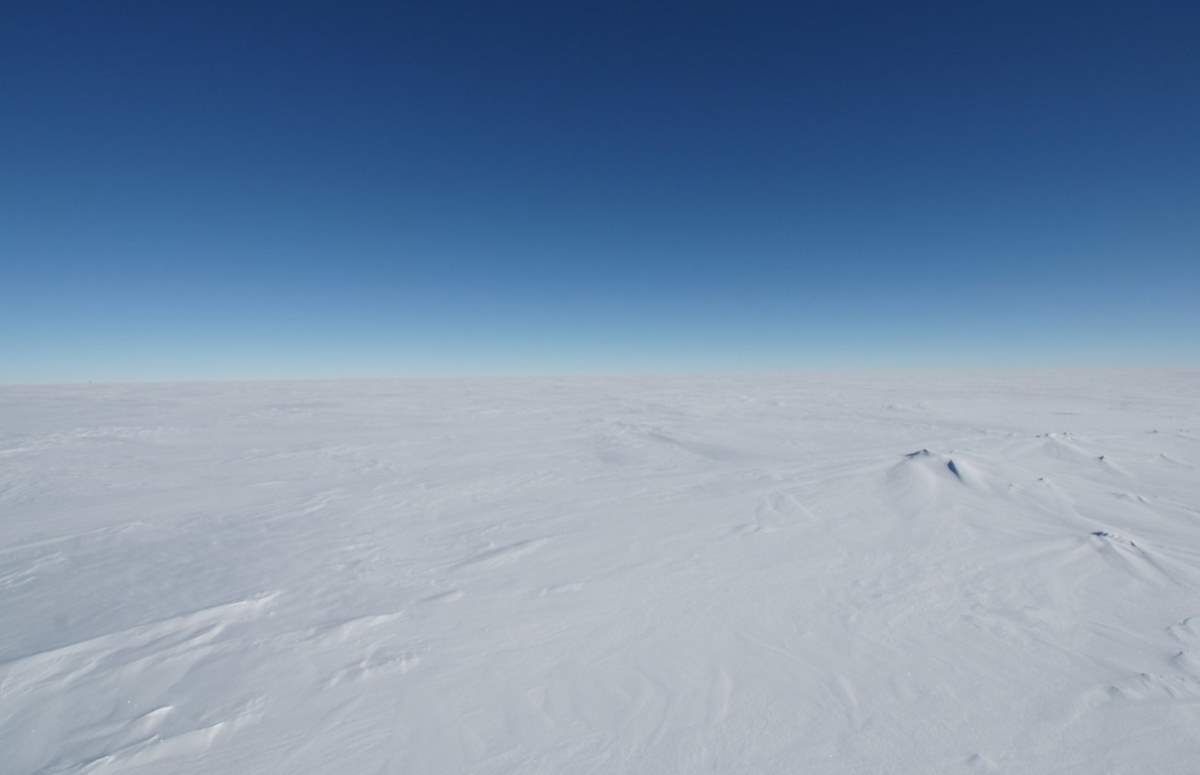Earth has a mild climate that is conducive to supporting life, with most regions experiencing temperatures that are not too extreme. However, there are also areas that have incredibly hot or cold temperatures. From the blistering heat of the world’s deserts to the bone-chilling cold of the polar regions, our planet offers a wide range of environments. Here are the hottest and coldest places on Earth and what makes them unique.
The hottest places on Earth
The new highest temperature on Earth record: 130°F (54.4°C), Death Valley National Park, California, The United States
On August 16, 2020, what could be the highest temperature ever reliably recorded on Earth was recorded in Death Valley National Park, California: 130°F (54.4°C). US National Weather Service has verified the record.
Previous record high [now in dispute]: Greenland Ranch, Furnace Creek, Death Valley, The United States

Greenland Ranch in Death Valley’s Furnace Creek (a census-designated place in Inyo County, California) holds the record for the highest reliably recorded air temperature in the world, 134°F (56.7°C) on July 10, 1913.
But, this figure is now in dispute: Christopher Burt of The Weather Underground investigated the claim in 2016 and cast doubt that the 1913 recording was accurate. According to Burt, a temperature of 134°F in Death Valley on July 10, 1913, was essentially impossible from a meteorological perspective.
His conclusions were:
- The temperatures reported at Greenland Ranch during the period of hot weather from July 7-14, 1913 were not consistent with meteorological conditions in the region at the time of observation. There is no indication that an exceptional heatwave occurred in the Southwest U.S. during this period.
- The extreme temperature of 134°F measured on July 10, 1913, did not correlate with observations at other sites in the region on this date and likewise for the entire period of the extreme temperature readings reported from Greenland Ranch during the week of July 7-14, 1913.
- Concerns with the observer’s credibility and experience: Since the record hot observations at Greenland Ranch from July 7-14, 1913 cannot be explained meteorologically, it is the conclusion of this investigation that the observer, Oscar Denton, knowingly or inadvertently exaggerated the maximum temperatures during that time frame.
The village, which has a population of only 24 (as of 2010), also may hold the record for the highest natural ground temperature ever recorded: 201°F (93.9°C) was recorded on July 15, 1972.
From 1911 through 2006, Furnace Creek had an average high temperature of 91.4°F (33.0°C) and an average low temperature of 62.9°F (17.2°C). During that time period, the hottest month was July with an average daily high temperature of 116.5°F (46.9°C) and the driest month was June with an average monthly precipitation of 0.05 in (1.3 mm).
Probably, this record temperature has been exceeded since then in many places on Earth, but we have no official records of the temperatures.
Previous record high [now revoked]: 136°F (57.8°C) in ‘Aziziya, Libya
In 1922, an air temperature of 136°F (57.8°C) was recorded by a meteorological station in ‘Aziziya (sometimes spelled El Azizia, a small town and the former capital of the Jafara district in northwestern Libya). This was long considered the highest air temperature ever measured on Earth. But, on September 13, 2012, the World Meteorological Organization announced that the WMO Commission of Climatology World Archive of Weather and Climate Extremes had found that the record was invalid, so the record went back to Furnace Creek. The reasons for WMO were:
- The weather station was first in ‘Aziziya town, but, in 1919, it was moved to a hilltop fort, where the weather station was set up on the black tarmac, which would have absorbed more sunlight and made the air there artificially hotter, explaining a period of very hot readings there from 1919 to 1928.
- Shortly before the record reading on 13 September 1922, the weather station’s usual maximum thermometer had been damaged and then replaced by an uncalibrated, ordinary maximum-minimum thermometer such as often used in greenhouses.
- On 11 September 1922, the usual record keeper was replaced by an inexperienced observer, who was untrained in using the thermometer and the record log. This is known by the change in handwriting on the log sheets and by the high and low temperatures being recorded in the wrong columns. The thermometer used sliding-colored cylinders to record maximum and minimum temperatures, and these cylinders were about 7 to 8 degrees Celsius long on the thermometer scale. The WMO now believes that the inexperienced observer was reading from the wrong end of the high-temperature cylinder inside the thermometer, getting a reading which was 7 to 8 degrees too high.
The hottest city in the world: Jacobabad, Pakistan

Jacobabad is a city located in the Sindh province of Pakistan. It is situated in the northwestern part of the province, near the border with the Balochistan province and Iran. The city is located in a semi-arid region and experiences extreme temperatures, particularly during the summer months. The 2017 population of Jacobabad was 191,076.
The climate of Jacobabad is classified as a hot desert climate (BWh) according to the Köppen climate classification system. The summers are extremely hot and dry, with average temperatures ranging from 95°F (35°C) to 110°F (43°C) during the day.
In May 2022, during the 2022 South Asian heat wave, Jacobabad’s mean temperature for the month of May broke the all-time record at 43°C (109°F), reaching or exceeding 50°C (122°F) on four days. The highest temperature was measured at 52.8°C (127.0°F), making Jacobabad the hottest city and the hottest inhabited place in the world.
It’s important to note that there may be other places with hotter temperatures that have not been officially recorded or recognized.
The coldest places on Earth
Record low: Vostok Station, Antarctica

Vostok Station (which means “Station East” or “East Station” in English) is a Russian (formerly Soviet) research station in inland Princess Elizabeth Land, Antarctica. Founded by the Soviet Union in 1957, it is by far the coldest spot on earth, with the lowest recorded temperature at -89.2°C (-128°F) on July 21, 1983 (during the Antarctic winter).
On average, Vostok also is the coldest place on Earth. The average temperature of the cold season (from April to October) is about -65°C (-85°F), while the average temperature of the warm season (from November to March) is about -42°C (-44°F).
New record low in Antarctica: -98°C (-144.4°F)
After re-examining weather data acquired by satellites for East Antarctic Plateau, researchers have found that temperatures at several sites had actually dipped lower than previously thought, to a record-setting minus 98 degrees Celsius (minus 144 degrees Fahrenheit) on several occasions between 2004 and 2016. The results are published in the journal Geophysical Research Letters.

Related: the coldest place on Earth – New satellite data reveals the lowest temperature recorded in Antarctica
The lowest measured air temperature on Earth is -89.2°C (-129 F) on 23 July 1983, observed at Vostok Station in Antarctica (Turner et al., 2009). However, satellite data collected during the Antarctic polar night during 2004-2016 reveals a broad region of the high East Antarctic Plateau above Vostok that regularly reaches snow surface temperatures of -90°C and below. These occur in shallow topographic depressions near the highest part of the ice sheet, at 3800 to 4050 m elevation.
Comparisons with nearby automated weather stations suggest that air temperatures during these events are near -94±4°C or about -138°F. Ultra-cold conditions (below -90°C or -130°F) occur more frequently when the Antarctic polar vortex is strong. This temperature appears to be about as low as it is possible to reach, even under clear skies and very dry conditions, because heat radiating from the cold clear air is nearly equal to the heat radiating from the bitterly cold snow surface.”
Coldest inhabited place: Oymyakon (Russia)

Oymyakon, a village in Oymyakonsky Ulus of the Sakha Republic, the Russian Federation, located along the Indigirka River, is considered the coldest inhabited place on Earth. On February 6, 1933, a temperature of -67.7°C (-90°F) was recorded at Oymyakon’s weather station. This is the lowest recorded temperature for any permanently inhabited location on Earth.
Oymyakon is known as one of the places considered the Northern Pole of Cold, the other being the town of Verkhoyansk. The Northern Pole of Cold, also known as the Pole of Cold or the Absolute Pole of Cold, is a location in the northern hemisphere where the coldest temperatures on Earth have been recorded. It is not an official geographic term, but rather a colloquialism.
In Oymyakon the average minimum temperature for January, February, and December remains below -50°C (-58°F). But despite the harsh, long winters, summers are mild, sometimes with hot, and very hot, days. July and August temperatures over 30°C (86°F) are not rare during the day. On July 28, 2010, Oymyakon recorded a record-high temperature of 34.6°C (94°F), yielding a temperature range of 102.3°C (184.1°F).
So, Eureka, Nunavut, Canada has the lowest annual mean temperature at -19.7°C (-3.5°F).
The coldest city in the world: Yakutsk (Russia)
Yakutsk is the capital city of the Sakha Republic, Russia, located about 450 kilometers (280 mi) south of the Arctic Circle and has a population of 269,601 (2010 Census). Yakutsk is the coldest major city in the world. If the 3 million km2 Sakha Republic were a sovereign nation, rather than a federal subject of Russia, it would be the coldest national capital as well (now it is Ulaanbaatar, the capital of Mongolia).
In Yakutsk, average monthly temperatures range from +19.5°C (67.1°F) in July to -38.6°C (-37.5°F) in January. The lowest temperature recorded in Yakutsk was -64.4°C (-83.9°F) and the highest was +38.4°C (101.1°F).

Sources
- Death Valley on Wikipedia
- Furnace Creek, California on Wikipedia
- ‘Aziziya on Wikipedia
- Vostok Station on Wikipedia
- Oymyakon on Wikipedia
- Yakutsk on Wikipedia
- “An Investigation of Death Valley’s 134°F World Temperature Record” on the Weather Underground website
- Budget of NASA, Year by Year [1980-1989] - June 10, 2024
- Budget of NASA, Year by Year [1970-1979] - June 10, 2024
- Budget of NASA, Year by Year [1958-2024] - June 10, 2024


